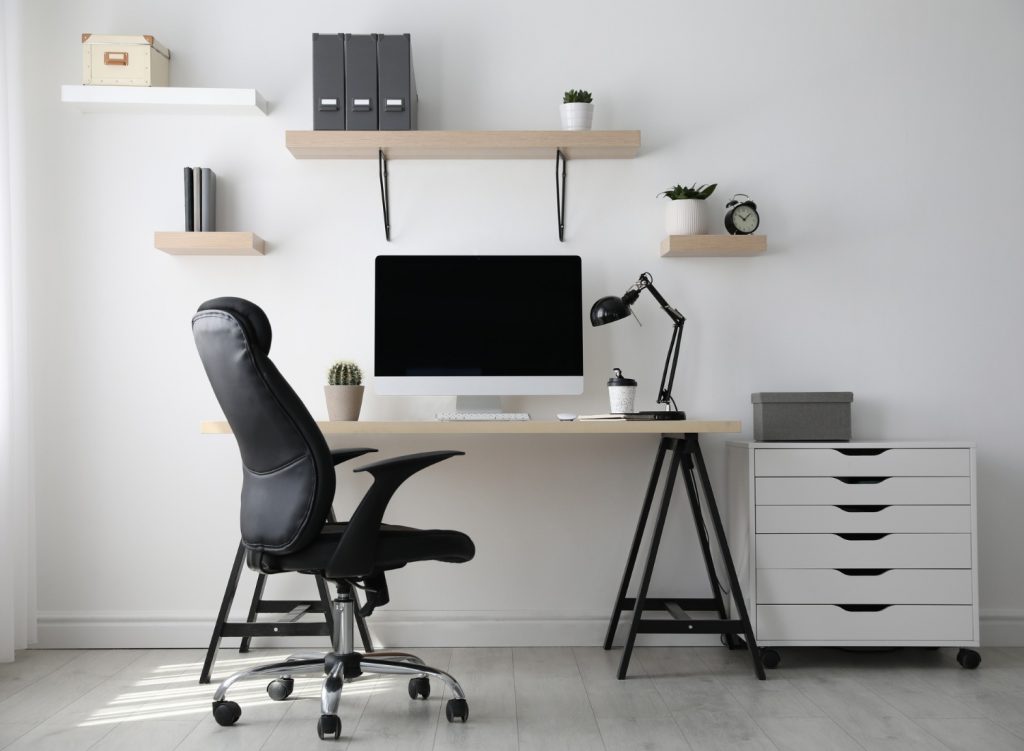Office Chair Keeps Sinking? How to Fix it and When to Buy a New One

The office chair plays a pivotal role in our desk comfort, influencing whether we’ll spend our workday being productive or feeling a bit restless. When your chair starts to sink, you may wonder if there’s a way to salvage it and restore its original level of support, or if it’s time to invest in a new one.
In this post, we’ll delve into the frustrating phenomenon of office chairs that can’t seem to hold their ground. Whether you’re sinking slowly throughout the day or suddenly plummeting to the lowest setting, we’ve got some potential fixes that may save your sinking seat and what to consider when purchasing a replacement.
Why Does Your Office Chair Keep Sinking?
There are several common causes for an office chair that starts sinking unexpectedly. One possibility is a defective gas cylinder responsible for the chair’s height adjustment. Another cause could be a malfunctioning adjustment lever, preventing you from locking the chair. Loose screws or components can also lead to sinking. By understanding these causes, you can better diagnose and fix the problem.
To effectively fix your sinking office chair, it’s essential to have a basic understanding of how different chair mechanisms work. Most office chairs have a gas cylinder that adjusts the chair’s height. The adjustment lever allows you to lock the chair at a specific height. The chair’s various components, including screws and connectors, are crucial in maintaining stability. Familiarizing yourself with these mechanisms will make the repair process easier.
How to Fix a Sinking Office Chair
To fix a sinking office chair, you will need a few tools. These include an adjustable wrench, pliers, a rubber mallet, a screwdriver, and lubricating oil. Having these tools ready before you start the repair will save you time and prevent unnecessary frustration.
Identifying the problem area
Examine your office chair to identify the specific problem area. Check the gas cylinder for leaks or signs of wear. Test the adjustment lever to see if it locks or releases smoothly. Inspect the screws and components for any looseness or damage. Identifying the problem area will help you determine the appropriate repair method.
Repairing a defective gas cylinder
If your office chair’s gas cylinder is the culprit behind the sinking issue, repairing it can easily solve it. Removing the chair seat from the base exposes the gas cylinder. Using an adjustable wrench and pliers, carefully detach the cylinder from the base and the seat. Replace the defective cylinder with a new one, ensuring a secure fit. Reassemble the chair and test the height adjustment to confirm that it functions properly.
Fixing a malfunctioning adjustment lever
It may need repair if your adjustment lever fails to lock or release the chair’s height. Start by removing the seat from the base to access the lever mechanism. Use a screwdriver to disassemble the lever, inspecting it for any damage or obstruction. Clean the lever thoroughly and lubricate it with oil if necessary. Reassemble the lever and test its functionality. If the lever is irreparable, consider replacing it with a new one.
Tightening loose screws or components
Loose screws or components can often cause an office chair to sink. Inspect all the screws and connectors on your chair, tightening any loose ones. If any screws are missing or damaged, replace them with suitable replacements. Ensure that all components are securely attached to maintain stability and prevent sinking.
Purchasing a New Office Chair
Several key factors should influence your decision when purchasing a new office chair. These include ergonomic design, adjustable features, lumbar support, padding and cushioning, durability, and weight capacity. By prioritizing these factors, you can select a chair that offers optimal support and comfort to alleviate discomfort, such as an office chair for back pain.
In Conclusion
Dealing with a sinking office chair can be a frustrating and uncomfortable experience. However, by understanding the common causes of sinking and learning how to fix the problem, you can restore your chair to its proper height and enjoy a comfortable working environment. Remember to prioritize safety and gather the necessary tools before attempting any repairs.
Identifying the specific problem area, such as a defective gas cylinder or malfunctioning adjustment lever, will guide you in finding the appropriate repair method. Tightening loose screws and components can also help prevent sinking. Following the steps outlined in this article and making informed decisions, you can create a comfortable and supportive workspace that promotes back pain relief and helps you work at your best.
Decades of Combined Expertise
Best Buy Guidebook is a culmination of online publishing lessons learned. From SEO to paid ads, our team has experienced the highest of highs and the lowest of lows. Our goal now is simple: Arm readers with the most information possible.
